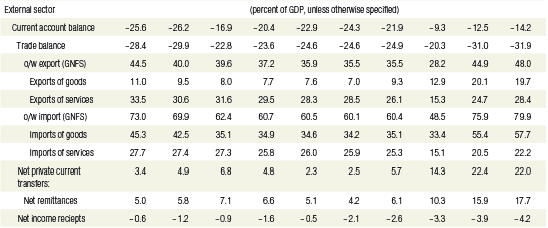The World Bank’s The Lebanon Economic Monitor (LEM) Fall 2022 “Time for an Equitable Banking Resolution” was released on November 23, 2022, and it argues that “more than three years into the worst economic and financial crisis in Lebanon’s history, discord among key stakeholders on how to distribute the financial losses remains the main bottleneck for reaching an agreement on a comprehensive reform plan to salvage the country. An unprecedented institutional vacuum will likely further delay any agreement on crisis resolution and critical reform ratification, deepening the woes of the Lebanese people”.
The LEM also “estimates real GDP to contract by a further 5.4% in 2022 assuming continued political paralysis and no implementation of a recovery strategy. Owing to better-than-expected data, the LEM revises upward the estimated contraction in real GDP for 2021 to 7% (from a previous 10.4%). Lebanon’s total contraction of 37.3% in real GDP since 2018 -among the worst the world has seen- has already wiped out 15 years of economic growth and is scarring the country’s potential for recovery. Despite the Central Bank’s interventions to attempt stabilizing the parallel market exchange rate at the expense of dwindling reserves, the sharp depreciation in the Lebanese Lira persists (145% over the first 10 months of 2022) driving surging inflation, in triple digits since July 2020 and expected to average 186% in 2022, amongst the highest globally”.
As to financial sector restructuring, the LEM observes that “with financial losses exceeding US$72 billion, equivalent to more than three times of GDP in 2021, a financial sector bailout is unviable as there are simply no sufficient public funds: public assets are worth only a fraction of the estimated financial losses and potential revenues from oil and gas are still uncertain and years away. A financial sector bailout is also not equitable, as asking the public to compensate bank equity holders and wealthy depositors would imply a re-distribution of wealth from poorer to richer households. A credible resolution strategy should apply the principles of equity and fairness to protect taxpayers and small depositors who, so far, have borne the brunt of the crisis. This is aligned with international best-practice for financial sector resolution which calls for recognizing and addressing the large losses in the financial sector upfront, respecting the hierarchy of creditor claims, protecting small depositors, and refraining from recourse to public resources. Such a bail-in solution together with comprehensive structural reforms is the only realistic option for Lebanon to turn the page on its unsustainable development model”.
Lastly, the LEM also includes “two Special Focus sections. The first, “Global Comparators: The Hole is Greater than the Sum of the Parts”, assesses the severity of Lebanon’s crisis by comparing it to a select group of Fragile and Conflict States and concludes that Lebanon’s macroeconomic performance is worse—or—at best—on par, with those of this specific group of countries (Zimbabwe, Yemen, Venezuela and Somalia). The second analyzes “Dollarization in Lebanon” and concludes that the current crisis will likely reinforce high levels of dollarization even upon recovery”.
Selected Macroeconomic Indicators for Lebanon; 2013–2022:



Source: Government data and World Bank staff estimates and projections